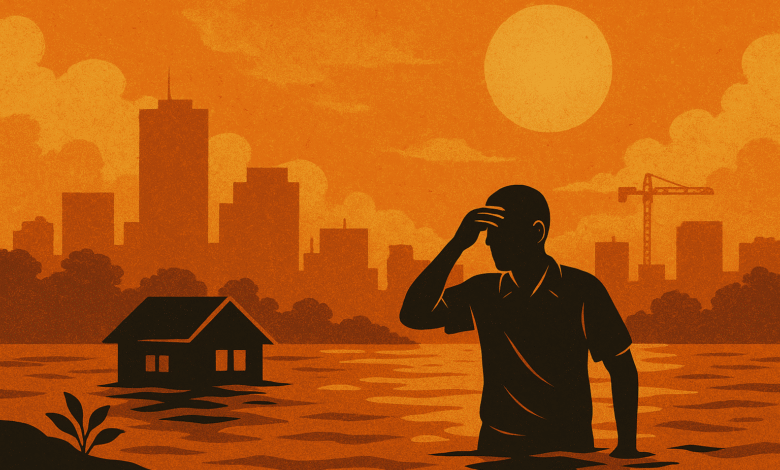
What July 2030 Philippines Could Look Like
Imagine waking up in July 2030 Philippines: 42°C heat index before lunch, and flash floods by sunset. It sounds extreme—but this could be real. Climate change isn’t some distant threat. It’s already reshaping our seasons, affecting how we live, work, and survive. If we don’t act now, future Julys could become unbearable.
It’s Not Just Hot—It’s Dangerous in July 2030 Philippines
According to PAGASA, the country’s average temperature is expected to rise by 0.9°C by 2020 and by as much as 1.8–2.2°C by mid-century (2050), compared to the 1971–2000 baseline. Temperatures are rising at around 0.1 °C per decade, with a historical increase of 0.68 °C from 1951 to 2015.
That small shift might seem insignificant, but in our tropical climate, it pushes many July 2030 Philippines days into a heat index of over 40°C—already in the “extreme caution” zone. Seniors, children, and outdoor workers will be especially vulnerable to heat stroke and other illnesses.
The Rains in July 2030 Won’t Be the Same
Yes, July is part of the rainy season. But climate change is expected to make rains heavier—yet less predictable. Floods in the morning, then dry, scorching heat by late afternoon. And the following week? Not a drop of rain.
According to the Climate Change Commission, we can expect:
- Stronger monsoon rains, leading to more flash floods and landslides
- Longer dry spells, especially in areas like Mindanao
- More intense typhoons, with stronger winds and greater damage
Farmers will face massive challenges. Too much water one month, too little the next. Rice crops could drown or dry up—causing spikes in food prices and affecting food security across the nation.
READ: Flood Woes: Metro Manila Needs Better City Planning
Why This Is Happening
We’re not among the world’s biggest polluters, but we are one of its most climate-vulnerable countries. According to the World Bank’s Country Climate & Development Report, economic damages from climate change in the Philippines could reach up to 7.6% of GDP by 2030, and 13.6% by 2040 if no serious action is taken.
That means billions lost—not just in agriculture, but also in health, labor productivity, and infrastructure. We’re looking at a future where:
- Health: Heat stroke, respiratory illnesses, and asthma-related hospitalizations increase.
- Agriculture: Farmers lose yields. Food prices surge.
- Income: Livelihoods suffer. The economy slows down.
And all this will hit the poor the hardest.
But There’s Still Time
Communities are taking action. Local governments are investing in disaster preparedness. Organizations are planting mangroves and promoting climate-resilient crops. The Department of Energy has committed to 50% renewable energy by 2030, though stronger enforcement is needed.
You can help too:
- Demand climate action from your local and national leaders
- Embrace clean energy, and support solar or wind
- Reduce waste, save electricity, educate others
- Share stories like this to raise awareness
It Maybe 5 Years from Now, But…
Yes, the science is sobering. However, fear is only useful if it leads to action. If we make the right choices now—not next year, not when it’s too late—then the Philippines in July 2030 doesn’t have to be hellish.
Let’s not wait for the day your child asks, “Ma, bakit parang oven ‘yung kwarto natin?”
Because by then, baka wala nang paraan.




